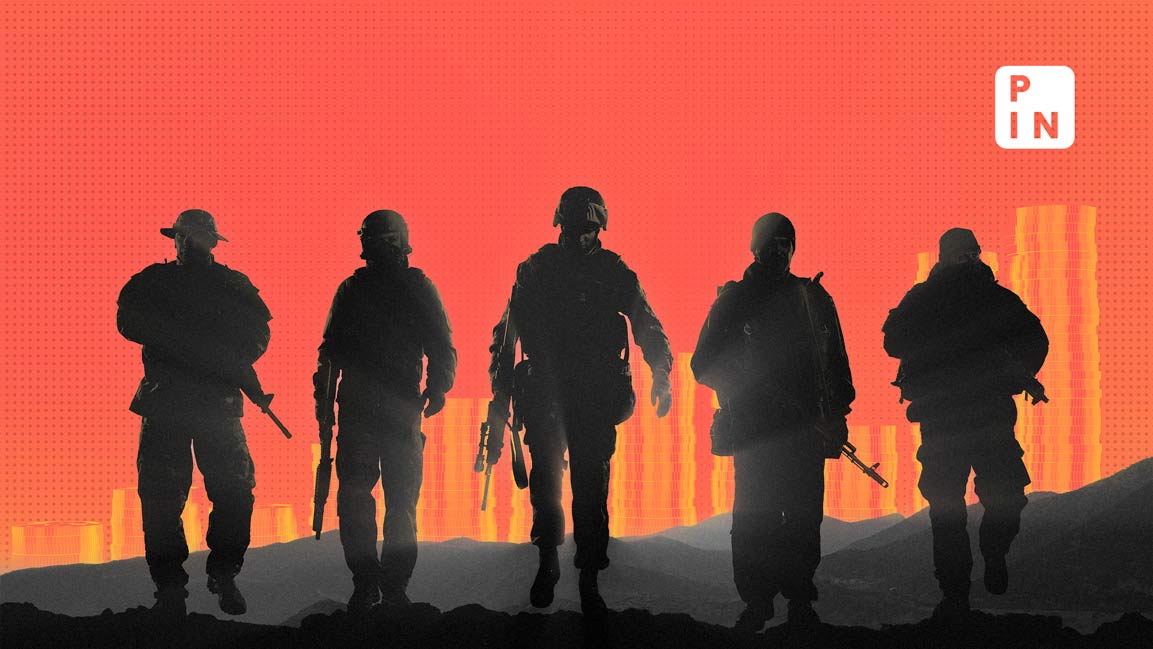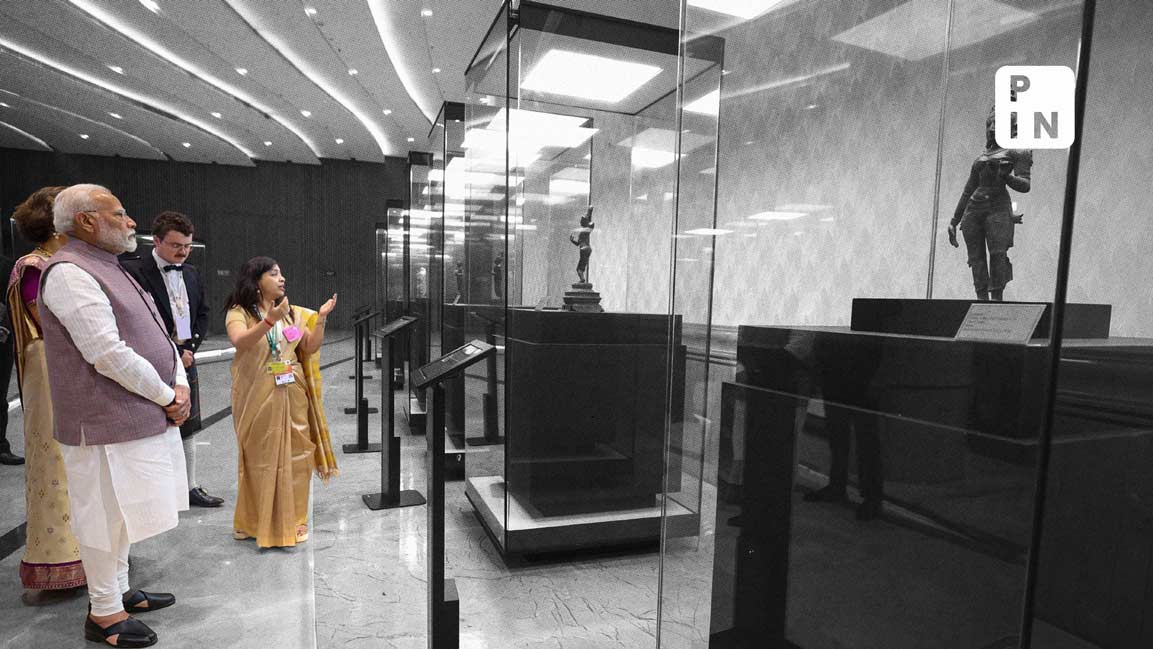- | 12:00 pm
Global military spending in 2023 surges to $2,443 bn amid wars, rising tensions
With military expenditure of $83.6 billion, India was the fourth largest spender globally

Total global military expenditure reached $2,443 billion in 2023, an increase of 6.8% in real terms from 2022, the steepest year-on-year increase since 2009 as tensions raged in Europe and Middle East, a report said.
According to new data on global military spending published by the Stockholm International Peace Research Institute (SIPRI), the five biggest spenders in 2023 were the United States, China, Russia, India, and Saudi Arabia, which together accounted for 61% of world military spending.
Among the top 10, military spending as a share of government expenditure was highest in Ukraine (58%), followed by Saudi Arabia (24$) and Russia (16%).
“The unprecedented rise in military spending is a direct response to the global deterioration in peace and security,’ said Nan Tian, senior researcher with SIPRI’s military expenditure and arms production program. “States are prioritizing military strength but they risk an action–reaction spiral in the increasingly volatile geopolitical and security landscape.”
India fourth largest spender
With military expenditure of $83.6 billion in 2023, India was the fourth largest spender globally. Indian spending was up by 4.2% from 2022 and by 44% from 2014.
Its spending is 2.4% of GDP, a slight decline from 2014 when military spending as a share of GDP was 2.5%.
India’s share in global military spending was 3.4%.
“The increase in India’s military spending was mainly a result of growing personnel and operations costs, which made up almost 80% of the total military budget in 2023. This aligns with the government’s priority to strengthen the operational readiness of the armed forces amid ongoing tensions with China and Pakistan,” the report said.
In comparison, capital outlays to fund military procurement remained relatively stable, at around 22% of the budget in 2023. A total of 75% of these outlays went towards equipment produced domestically, which was the highest level ever and up from 68% in the previous year.
The continued shift towards domestic procurement reflects India’s goal of becoming self-reliant in arms development and production, the report noted.
Russia-Ukraine war drives global military spending
A major driver of global military expenditure was the Russia-Ukraine war. Russia’s military spending grew by 24% in 2023 to an estimated $109 billion. This was equivalent to 5.9% of Russia’s GDP.
The increase in Russian military expenditure in 2023 was largely facilitated by Russia’s economic performance, which surpassed expectations despite a significant fall in the country’s oil and gas revenue, the report said.
Russia has relied on its sovereign wealth fund and state loans to finance its expanding budget deficit, which has allowed it to limit the impact of its full-scale invasion of Ukraine on its economy, the report noted.
The largest increase in military spending was in Ukraine, where military spending as a share of GDP rose by 11 percentage points to reach 37%. Ukraine became the eighth largest military spender in 2023, increasing its spending by 51% to $64.8 billion.
Ukraine’s military spending in 2023 was 59% the size of Russia’s. However, Ukraine also received at least $35 billion in military aid during the year, including $25.4 billion from the United States. Combined, this aid and Ukraine’s own military spending were equivalent to about 91% of Russian spending.
Heating Middle East
Military expenditure in the Middle East rose by 9.0% to an estimated $200 billion in 2023. This was the biggest annual increase in the decade 2014–23. Spending went up in the three largest military spenders in the region: Saudi Arabia, Israel, and Turkey.
Israel’s military spending grew by 24% to reach $27.5 billion in 2023. The spending increase was mainly driven by Israel’s large-scale offensive in Gaza in response to the attack on southern Israel by Hamas in October 2023. Israel’s monthly military expenditure has risen substantially since the start of the war in Gaza, going up from an average of $1.8 billion per month before October to $4.7 billion in December 2023.
Saudi Arabia was the fifth biggest military spender globally in 2023. Its spending rose by 4.3% to an estimated $75.8 billion, or 7.1% of GDP. Saudi Arabia is the world’s largest exporter of crude oil, and the growth in its military spending in 2023 was partly financed on the back of increased demand for non-Russian oil and rising oil prices following Russia’s invasion of Ukraine.
Iran was the fourth largest military spender in the Middle East in 2023. Its spending went up marginally (+0.6%) to $10.3 billion.
According to available data, the share of total military spending allocated to the Islamic Revolutionary Guard Corps (IRGC) has been increasing since at least 2019. Spending on the IRGC rose from 27% of Iran’s total military expenditure in 2019 to 37% in 2023.
In addition, spending linked to the procurement of aircraft from Iran Aircraft Manufacturing Industrial Corporation (HESA) increased by 27% over the same period. Among other things, HESA produces uncrewed aerial vehicles (UAVs) used by the IRGC.
“The large increase in military spending in the Middle East in 2023 reflected the rapidly shifting situation in the region—from the warming of diplomatic relations between Israel and several Arab countries in recent years to the outbreak of a major war in Gaza and fears of a region-wide conflict,” said Diego Lopes da Silva, senior researcher with SIPRI’s military expenditure and arms production program.
Nato spending at record high
In 2023, the 31 North Atlantic Treaty Organization (Nato) members accounted for $1,341 billion, equal to 55% of the world’s military expenditure.
Military spending by the US rose by 2.3% to reach $916 billion in 2023, representing 68% of total NATO military spending.
Most European Nato members also increased their military expenditure. Their combined share of the Nato total was 28%, the highest in a decade. The remaining 4% came from Canada and Turkey.
“For European Nato states, the past two years of war in Ukraine have fundamentally changed the security outlook,” said Lorenzo Scarazzato, researcher with SIPRI’s military expenditure and arms production program. “This shift in threat perceptions is reflected in growing shares of GDP being directed towards military spending, with the Nato target of 2% increasingly being seen as a baseline rather than a threshold to reach.”
A decade after Nato members formally committed to a target of spending 2% of GDP on the military, 11 out of 31 members met or surpassed this level in 2023—the highest number since the commitment was made. Another target—of directing at least 20% of military spending to ‘equipment spending’—was met by 28 Nato members in 2023, up from 7 in 2014.
China raises stake
China, the world’s second largest military spender, allocated an estimated $296 billion to the military in 2023, an increase of 6.0% from 2022. This was the 29th consecutive year-on-year rise in China’s military expenditure. China accounted for half of total military spending across the Asia and Oceania region. Several of China’s neighbors have linked their own spending increases to China’s rising military expenditure.
“China is directing much of its growing military budget to boost the combat readiness of the People’s Liberation Army,” said Xiao Liang, researcher with SIPRI’s military expenditure and arms production program. “This has prompted the governments of Japan, Taiwan and others to significantly build up their military capabilities, a trend that will accelerate further in the coming years.”










